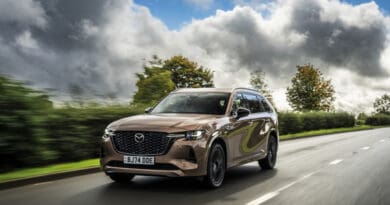
Polestar 2 review: premium performance pitched perfectly
Ahead of the launch of the Polestar 3, we ask if the brand’s first pure EV, the Polestar 2, can still count itself among the best in class.Polestar
has been a bit of a one-trick pony for a while.
After the radical hybrid Polestar 1, it quickly brought its first EV to market in the shape of the Polestar 2, with an ambition to be a premium performance. Since then the 2 has been the brand’s only model in a growing market, facing challenges from the BMW i4, Tesla Model 3 and Hyundai Ioniq 6.
That sales have consistently risen is a sign that buyers like what they see but, like any four-year-old car, the Polestar 2 needed a midlife refresh to keep it competitive.
Design, interior and technology
Even by the usually modest standards of midlife facelifts, the 2024 Polestar 2’s styling changes are minimal. Essentially, there are some new wheels and a new ‘smart zone’ face for the car. This is a smoothed-off panel in place of the previous honeycomb grille which hides a host of driving-related sensors and makes the Polestar look a little less Volvo-like.
Polestar’s designers have clearly adhered to the ‘if it ain’t broke’ philosophy, leaving the strikingly handsome looks alone.
The same is true of the interior, where things have been left largely unchanged. Borrowing from the same Scandi-cool school of design as Volvo, the Polestar’s cabin is a stripped back affair with barely any physical controls and a few simple design cues and materials. Touches like the hollow trapezoidal drive selector and crystal-effect volume knob add some interesting and high-quality features and there’s a pleasing tactility to all the surfaces and touchpoints.

My test car benefited from the pale ‘Zinc’ Nappa leather and light ash trim which create a more airy feeling than some of the darker interior finishes, aided by the optional panoramic sunroof. The Polestar 2 still isn’t the most spacious car, however. There’s room enough in the front but rear legroom feels on the tight side, especially in comparison to the Ioniq 6 or Model 3.
On the tech front, there’s a simple 12-inch digital instrument display and an angled wireless phone charger beneath the 11.2-inch Android Automotive-powered touchscreen. This has been updated for 2024 with unshowy but useful updates that make the excellent and intuitive interface even more flexible and connected.
Elsewhere there’s USB charging points front and rear and a smattering of useful storage areas. Higher spec cars add features such as ventilated front seats, a heated steering wheel, Harman Kardon stereo, cabin air filtration and phone-based digital key.
Battery, motor and performance
While not much has changed on the surface of the Polestar 2, underneath there have been some major changes.
The most dramatic have been to the single motor long-range version. For a start, the motor is more powerful than before – now 296bhp – and has been moved from the front to the rear. A new 79kWh battery has also been installed. Moving the motor so it effectively pushes the car rather than pulls it is a pretty major midlife change. However, Polestar says it both makes the car more efficient and more engaging to drive.
I haven’t had a chance to try the single-motor version yet, so I’ll reserve judgement on how much of an improvement that setup is but the official numbers are certainly impressive – a 22% increase in range (to 406 miles), 9% less energy usage and 34% faster charging thanks to 205kW DC capability.

I have, however, driven the range-topping all-wheel-drive version. Polestar positions itself as a performance brand and the Long Range Dual Motor with Performance Pack (to give it its full name) certainly has the stats to back that up.
Regular dual-motor cars pack 416bhp but the £5,000 Performance Pack takes that up to 469bhp and 546lb ft of torque. In a straight line that’s good enough for a 0-62mph time of 4.2 seconds and a top speed of 127mph. The BMW i4 M50’s extra 90bhp gives it a 0.3-second edge but the thrust of acceleration from the Polestar 2 still caused my driving companion to utter a curse on more than one occasion.
My drive was on rain-soaked Scottish B-roads, not famous for their forgiving nature. Tight twists, awkward crests, massive potholes and lane-wide puddles quickly expose a car’s weaknesses but the Polestar acquitted itself impressively.

The Performance Pack comes with adjustable Ohlins dampers as standard. Ours were on the default factory setting which did an admirable job keeping the car settled, flat and relatively comfortable over some unpleasant surfaces.
Three stages of steering with pleasing weight and the brilliantly calibrated single-pedal drive add to a feeling of complete control, although you’re always slightly aware of the two-tonne-plus kerb weight.
The BMW i4 has more edge to it and more engagement but there’s no doubt that the Polestar 2 can cover ground quickly, confidently and securely without feeling compromised. And on the inevitable stretch of dull motorway slogging, it’s smooth, quiet and effortless, with the likes of adaptive cruise control to ease the boredom.
On a more prosaic note, the long-range model’s 79kWh battery should return up to 352 miles per charge – an improvement of more than 50 miles over the old version. Like the long-range single motor, DC charging at up to 205kW means a 10-80% top-up in less than half an hour.
Price and specification
The Polestar 2 range starts at £44,950 for a standard range (67kWh) single motor model. A £4,000 step adds the bigger battery and another £4,000 brings a second motor.
There’s only one trim level, backed up with three options packs, one of which is the £5,000 Performance Pack. All versions of the Polestar 2 come with safety kit ranging from cruise control and lane keep assist to blind spot assist with active steering and intersection collision avoidance.
Heated seats, dual-zone climate control, and LED headlights are also standard and buyers have a choice of vegan Weavetech, embossed textile or Nappa leather upholstery. You can read more about how the eco-conscious Polestar is ensuring the sustainability of its leather interiors here.
The £2,000 Pilot pack adds pilot assist adaptive cruise and lane centring, plus adaptive headlights, while the £4,000 Plus brings everything from fully electric seats and upgraded sound system to a heat pump, panoramic roof and tinted rear glass.
Verdict
Polestar has been really smart with its updates to the 2. Rather than messing about with the already excellent styling, comfort and technology, it has focused on giving drivers more of what they want – range and performance. In that way it has ensured the Polestar 2 remains a hugely attractive option in the premium EV market.

Polestar 2 Dual Motor Long Range Performance Pack
- Price: £57,950 (£63,950 as tested)
- Powertrain: Two-motor, all-wheel-drive
- Battery: 79kWh
- Power: 469bhp
- Torque: 546lb ft
- Top speed: 127mph
- 0-62mph: 4.2 seconds
- Range: 352 miles
- Consumption: 3.7m/kWh
- Charging: up to 205kW





